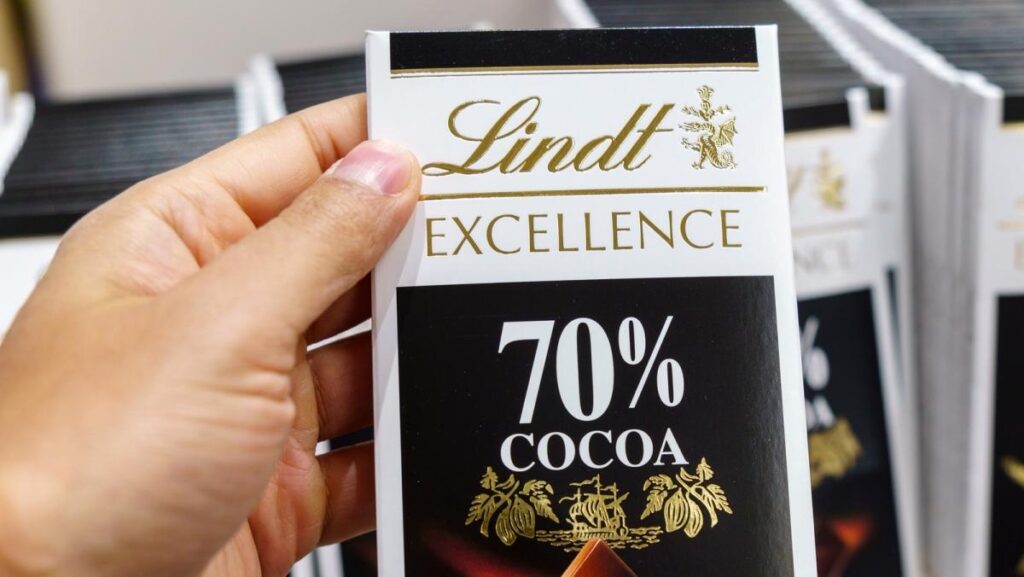Are Swiss Chocolates Safe? Lindt Admits to Presence of Heavy Metals in Products

Are Swiss Chocolates Safe? Lindt Admits to Presence of Heavy Metals in Products
Swiss chocolatier Lindt faces scrutiny after admitting the presence of lead and cadmium in its products. The controversy stems from a 2022 study by Consumer Reports and a subsequent lawsuit filed by US consumers
Renowned Swiss chocolatier Lindt is facing scrutiny after admitting that its premium chocolates contain traces of heavy metals, including lead and cadmium. This revelation follows a class-action lawsuit by U.S. consumers and a 2022 study conducted by Consumer Reports, an American non-profit organization, which raised concerns about harmful levels of these metals in dark chocolates, including Lindt’s Excellence line.
The study tested multiple brands and found alarmingly high levels of lead and cadmium in Lindt’s dark chocolate products. Specifically, Lindt’s Excellence Dark Chocolate 85% Cocoa contained 166% of the maximum allowable limit for lead and 80% for cadmium, while the 70% Cocoa variant recorded 116% of cadmium and 48% of lead. These findings have sparked fears about the health risks associated with long-term exposure to heavy metals, particularly for children, pregnant women, and frequent consumers of dark chocolate.
Health Risks of Heavy Metals
Lead and cadmium, though naturally present in the environment, can pose significant health risks when consumed in large or frequent quantities. According to the World Health Organization (WHO) and other health bodies, prolonged exposure to lead is linked to serious developmental issues, including reduced IQ in children, nervous system disorders, and potential kidney damage in adults. For pregnant women, lead exposure can cause developmental complications for the fetus. Cadmium, classified as a carcinogen by the CDC, is known to accumulate in the kidneys over time, leading to kidney damage and severe gastrointestinal distress in high doses.
Lindt’s Response and Legal Fallout
In response to the controversy, Lindt clarified that the presence of lead and cadmium in its chocolates is “unavoidable in the food supply chain,” emphasizing that the trace amounts detected are within regulatory limits and do not breach safety standards. The company also defended its marketing language, such as “expertly crafted,” as promotional terms rather than guarantees of absolute purity. However, U.S. consumers filed a class-action lawsuit against Lindt, accusing the brand of misleading advertising and failing to adequately warn about the presence of heavy metals in its products.
The lawsuit alleges that Lindt charged premium prices for chocolates that failed to meet the expectations of safety and quality implied by its branding. The case has been filed in multiple states, including California, New York, and Illinois, further intensifying the pressure on the chocolatier.
Should You Stop Eating Chocolate?
Consumer Reports advises moderation rather than complete avoidance of dark chocolate. The organization highlights that heavy metals like lead and cadmium are also present in other foods, such as carrots, sweet potatoes, and spinach, which are considered essential for a balanced diet. The risk, it explained, lies in frequent consumption over time. For occasional chocolate lovers, the danger is minimal, but frequent consumers are urged to exercise caution and opt for brands with lower levels of heavy metals.
While Lindt maintains that its chocolates comply with safety regulations, the controversy underscores the importance of transparency in food safety and labeling. As consumers weigh the risks, occasional indulgence in dark chocolate may remain a safe choice, but the findings have sparked a broader conversation about the long-term health impacts of heavy metals in our food supply.












